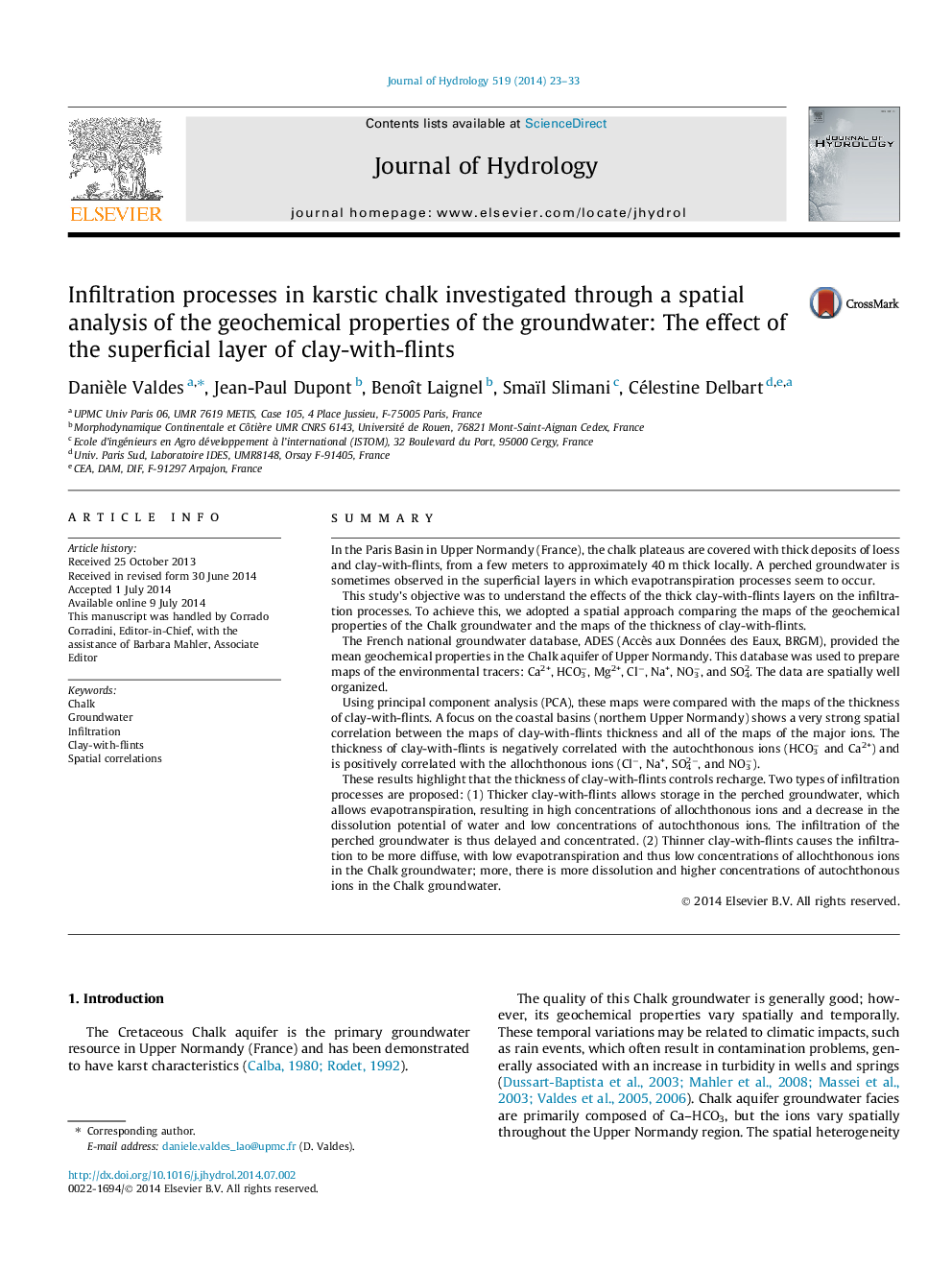| Article ID | Journal | Published Year | Pages | File Type |
|---|---|---|---|---|
| 6412336 | Journal of Hydrology | 2014 | 11 Pages |
â¢The geochemical properties of the karst Chalk aquifer are well organized spatially.â¢The geochemistry of the Chalk groundwater is spatially related to clay-with-flints.â¢The thickness of clay-with-flints controls the infiltration processes.
SummaryIn the Paris Basin in Upper Normandy (France), the chalk plateaus are covered with thick deposits of loess and clay-with-flints, from a few meters to approximately 40 m thick locally. A perched groundwater is sometimes observed in the superficial layers in which evapotranspiration processes seem to occur.This study's objective was to understand the effects of the thick clay-with-flints layers on the infiltration processes. To achieve this, we adopted a spatial approach comparing the maps of the geochemical properties of the Chalk groundwater and the maps of the thickness of clay-with-flints.The French national groundwater database, ADES (Accès aux Données des Eaux, BRGM), provided the mean geochemical properties in the Chalk aquifer of Upper Normandy. This database was used to prepare maps of the environmental tracers: Ca2+, HCO3â, Mg2+, Clâ, Na+, NO3â, and SO42. The data are spatially well organized.Using principal component analysis (PCA), these maps were compared with the maps of the thickness of clay-with-flints. A focus on the coastal basins (northern Upper Normandy) shows a very strong spatial correlation between the maps of clay-with-flints thickness and all of the maps of the major ions. The thickness of clay-with-flints is negatively correlated with the autochthonous ions (HCO3â and Ca2+) and is positively correlated with the allochthonous ions (Clâ, Na+, SO42â, and NO3â).These results highlight that the thickness of clay-with-flints controls recharge. Two types of infiltration processes are proposed: (1) Thicker clay-with-flints allows storage in the perched groundwater, which allows evapotranspiration, resulting in high concentrations of allochthonous ions and a decrease in the dissolution potential of water and low concentrations of autochthonous ions. The infiltration of the perched groundwater is thus delayed and concentrated. (2) Thinner clay-with-flints causes the infiltration to be more diffuse, with low evapotranspiration and thus low concentrations of allochthonous ions in the Chalk groundwater; more, there is more dissolution and higher concentrations of autochthonous ions in the Chalk groundwater.
